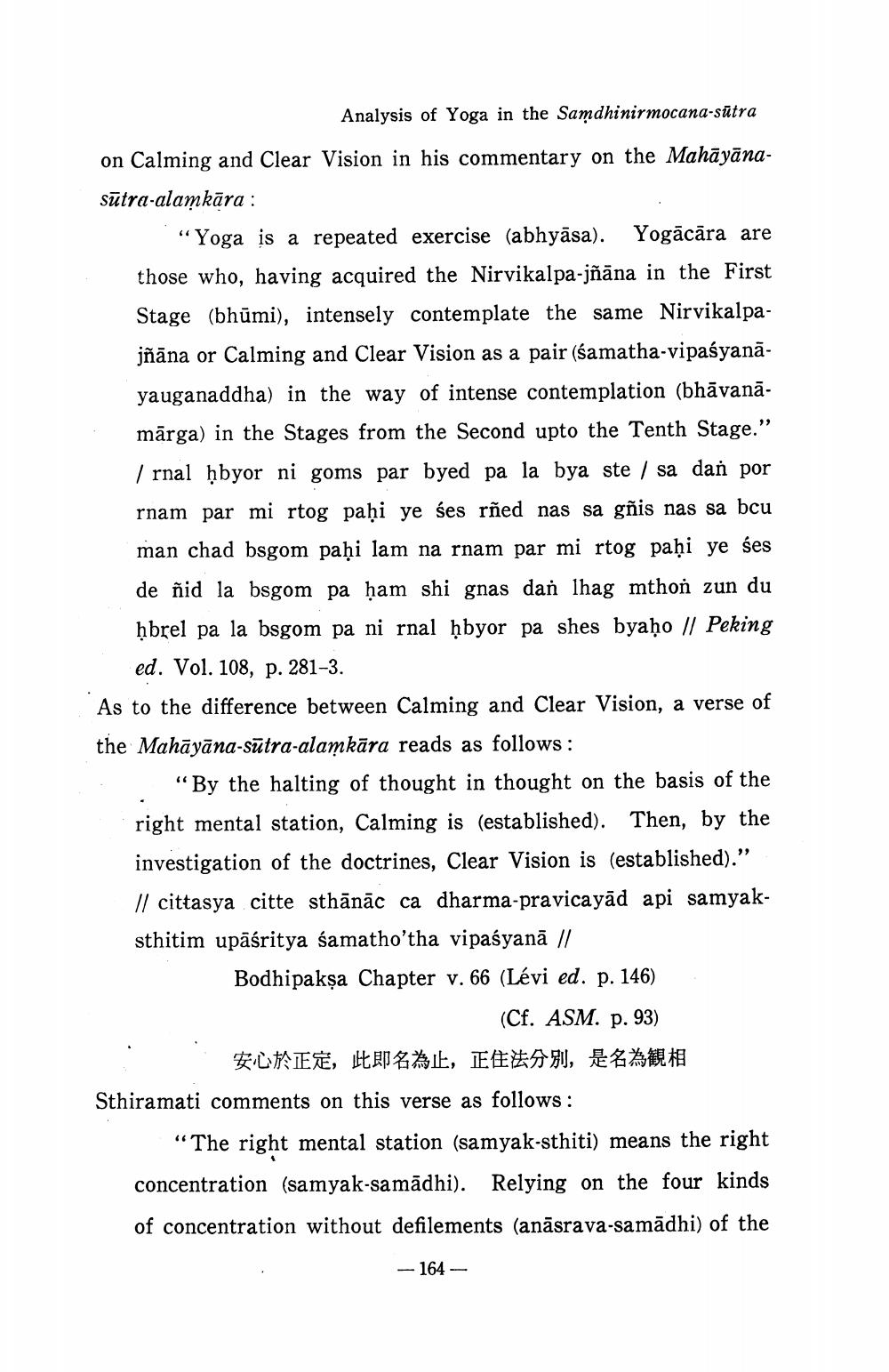Book Title: Analysis Of Yoga In Samdhinirmocana Sutra Author(s): Shinjo Kawasaki Publisher: Shinjo Kawasaki View full book textPage 7
________________ Analysis of Yoga in the Samdhinirmocana-sutra on Calming and Clear Vision in his commentary on the Mahāyāna sūtra-alamkāra : “Yoga is a repeated exercise (abhyāsa). Yogācāra are those who, having acquired the Nirvikalpa-jñāna in the First Stage (bhūmi), intensely contemplate the same Nirvikalpajñāna or Calming and Clear Vision as a pair (samatha-vipaśyanāyauganaddha) in the way of intense contemplation (bhāvanā. mārga) in the Stages from the Second upto the Tenth Stage.” | rnal ħbyor ni goms par byed pa la bya ste / sa dan por rnam par mi rtog paḥi ye śes rñed nas sa gñis nas sa bcu man chad bsgom paḥi lam na rnam par mi rtog paḥi ye ses de ñid la bsgom pa ham shi gnas dan lhag mthon zun du hbrel pa la bsgom pa ni rnal ħbyor pa shes byaḥo || Peking ed. Vol. 108, p. 281-3. As to the difference between Calming and Clear Vision, a verse of the Mahāyāna-sūtra-alamkāra reads as follows: "By the halting of thought in thought on the basis of the right mental station, Calming is (established). Then, by the investigation of the doctrines, Clear Vision is (established).” // cittasya citte sthānāc ca dharma-pravicayād api samyaksthitim upāsritya samatho'tha vipaśyanā // Bodhipaksa Chapter v. 66 (Lévi ed. p. 146) (Cf. ASM. p. 93) ECHTET, ERZIE, EES, Sthiramati comments on this verse as follows: “The right mental station (samyak-sthiti) means the right concentration (samyak-samādhi). Relying on the four kinds of concentration without defilements (anāsrava-samādhi) of the -- 164 -Page Navigation
1 ... 5 6 7 8 9 10 11 12 13 14 15 16
